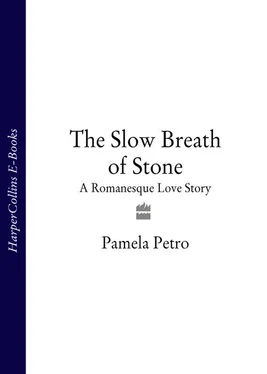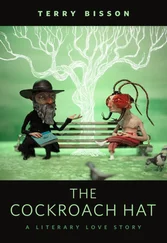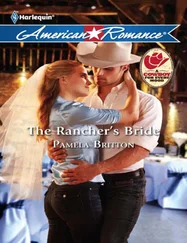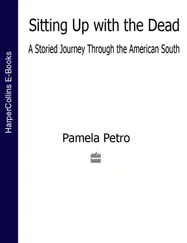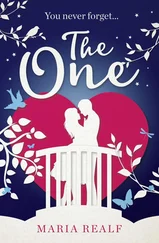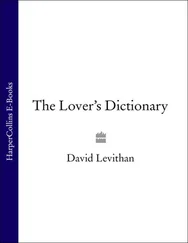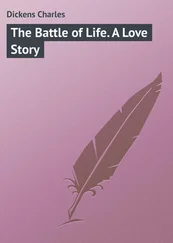I moved into the surrounding cemetery and sat propped against one of the headstones, shivering like a reptile from its sudden warmth. Even though my side was in shadow the three-inch sandstone slab radiated heat. I calculated that the sun must have been shining on the facing side for at least three hours. Stone absorbs solar heat slowly, photon by photon, an inch an hour.
The photographs I held were from Volume IV of Kingsley Porter’s ten-volume masterpiece, Romanesque Sculpture of the Pilgrimage Roads (one volume of text, nine of images). His wife Lucy – by far the better photographer – had shot the Espalion pictures and then taken a nap in the neighbouring field while he’d strode off to visit another church nearby.
There hadn’t been an ounce of sacrifice in Lucy’s nap. She’d loved the life that had led her to Espalion, in the old region of the Rouergue. She’d loved dashing through France, Italy, and Spain in the open Fiat; photographing Kingsley’s beloved Romanesque churches; enduring cold baths in provincial hotels, the two of them eating and sleeping like young soldiers. F. Scott Fitzgerald said that we all have a favourite, heroic period in our lives, and this had been theirs.
The field where she’d lain may have even seemed like a featherbed to Lucy after the conditions she had endured the previous spring. The war had just ended and Kingsley had been keen to visit and photograph Romanesque churches in the eastern environs of Paris. Lucy identified her journal from this time as, simply, ‘1919: Devastated Regions’.
The churches were often in ruins. ‘Climbed up fallen debris to height of capital to take photo,’ wrote Lucy without fanfare, or ‘Church had been blown up. Took heap of ruins, apse a circle against the sky.’ In another village she wrote, ‘Nothing standing and no people. Took a pile of stones to show what had been the church.’
Sometimes the churchyards had been shelled as well, so that the Porters were forced to navigate open graves and walkways strewn with body parts. ‘We had to pick our way carefully,’ recorded Lucy in April, ‘because of shells and hand grenades.’ Decaying horses littered the countryside. Lucy took in the horror and loss and legitimately feared for locals’ safety – ‘they mark [the buried shells] this year and not have them explode, but how about next year?’ – but she couldn’t keep her mind entirely off food (‘The Croix d’Or still sets a good table …’) nor her happiness discretely between the lines of her journal.
After our hot but poor coffee and tea we were off on the day’s work we both love so well.
… took interior, piers of nave distinctive. Despite the cold the birds, the flowering forsythia, and the ploughing oxen and horses announced spring. How happy I am!
Lucy may well have been content in her pasture, but I shifted restlessly against my tombstone. It was hard for me to sit still within eyeshot of the great pilgrimage way to Compostela. The road tugged at my peace, not so much that of my feet as of my mind. The Chemin de St Jacques implies a passage through time as well as countryside. In its promise of great distances lies the inescapable reckoning of passing seasons and years, and in my mind the Porters’ lives tumbled messily over the dam of 1920, down the decades of the twentieth century.
The thought nagged at me: why had Lucy been fearful of her and Kingsley’s great happiness? The phrase weighed down her journal like clumsy foreshadow. There amidst Perse’s dead I knew what she, in 1920, did not – that eventually Lucy had every reason to be fearful. That the Porters outlived the joy of that summer I knew from reading Lucy’s subsequent journals, discovered amongst her husband’s papers in a Harvard library. But that did not explain why a shadow had crossed her thoughts in Espalion. Was it a premonition? And did she recall that old, inexplicable dread a decade later when the high tide of her happiness had turned?
By then – the early 1930s – Kingsley and Lucy had forsaken the abundance of southwest France for the thin resources of the north of Ireland. On that warm, ripe afternoon, curled up against a rosy stone that smelled complete and holy, of everything that had ever lived and died, I couldn’t help thinking that in abandoning this place, this art, the Porters had left behind a source of salvation. These old French regions where my travels overlapped theirs – rural hinterlands once officially, but since the Revolution only affectionately, called Quercy and the Rouergue – are richly accommodating of body and soul. They burst at the seams with stone. Not the dense granite of Donegal, but fertile lime and sandstones central to the ecology, sculpture, and spirit of the great geological basin just south of the Massif Central.
In the Rouergue, which more or less corresponds to the modern département of the Aveyron, valleys of plum-coloured sandstone give root to the sloping vineyards of Marcillac. Quercy, a territorial ghost haunting today’s département of the Lot, is striated in bands of pale limestone plateaux called the causses – tablelands where the exposed bedrock is so plentiful you can smell it in the air. Its sheer abundance accounts for a culture of stony offspring varying greatly in age but retaining familial resemblance: dolmens and standing stones, erected thousands of years before Romanesque churches, and dry-stone walls, farmhouses, and conical shepherds’ huts – at once cheerful and ancient, like Stone-Age gazebos – erected centuries after. The bedrock from which they’ve all sprung, weathered into rich, calcareous soil, coaxes grapevines and walnut trees, melons and black winter truffles into abundance under the Quercynois sun.
This stone is both material and mortar. It not only builds art and shelter, it binds produce and architecture, sculpture and fungi, together as kin. The ‘black’ wine of Cahors is cousin to the angel Raphael, whom Lucy’s photograph freed from nine centuries’ bondage to the church of Perse.
To my mind Raphael and his Romanesque brethren are as generous to humankind, in their way, as the landscape. Their physical decline – Perse’s paradox of a sculpted vision of eternity fallen to ruin – is at heart a romantic paradox, begging us to imaginatively reanimate the life of an idea just as it asks our eyes to fill gaps in crumbled stone. These sculpted fragments and their pleas to be made whole again drew me, as nearly a century earlier they had drawn Lucy and Kingsley, generously and irresistibly into the sculpture. For the greatest romance of all is that of the self in love with the shadows it throws onto the external world. Romanesque art in its thousand-year-old decrepitude begs us to cast shadows. It insists we become part of what we view. And if we are unable to reinvent and reanimate? Then we are left with the dark pleasures of tragedy.
Lucy and Kingsley Porter were New Englanders, but they had meridional hearts: they loved Italy and found joy in what Lucy called ‘the choppy country’ of the Rouergue. And yet they exchanged the ready fecundity of southwest France for the dense granite and busy skies of County Donegal, in Ireland. Eventually I followed them there, too, to a saw-edged ridge of pink cliffs on Inishbofin, a tiny island barely clinging to the rim of Europe. Crouched there on the granite, I wondered if Lucy had remembered, as I was remembering, the tongue-red church of Perse, and that it was precisely the same colour as the headlands. The tumult of waves had worn them smooth just as rain and wind had erased the features of Christ’s face from the tympanum. Lucy must have wondered how she had come to travel so far from that sanctuary.
The autumn day I visited Inishbofin was unusually warm and I’d tarried on the little island, letting my imagination repopulate the past. I saw Lucy and Kingsley and their new young companion, Alan Campbell. Each in my mind’s eye poised in his or her turn on the cliff edge, a look of surprise not unlike that worn by Raphael on their faces. It was about Alan that I wondered the most. Alan, the inveterate dreamer, who would have been as likely as I – I’m easily his match in the sport of daydreaming, as was Kingsley – to fill the latent romance of the scene with characters and melodrama. By then, however, in midsummer 1933, he would have known that he’d wandered into a story beyond his own conjuring.
Читать дальше
